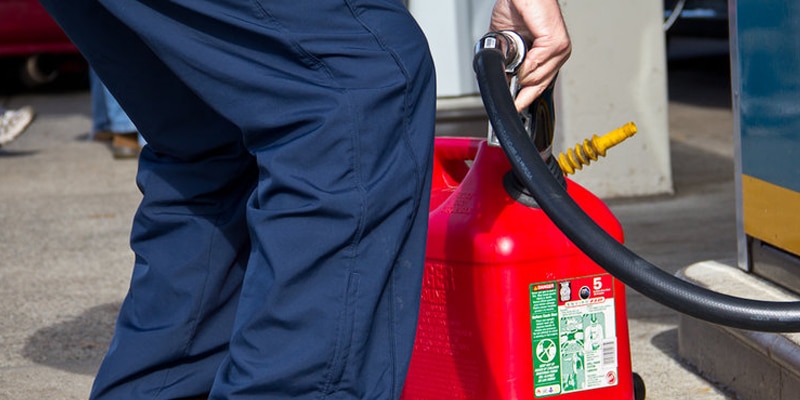Fuel Waste
A Guide to Knowing What’s In Your Tank and What It’s Costing You

Controlling fuel waste is an important conversation for organizations. The answer to why is simple – excessively high fuel costs cut into profits. To help identify areas where fuel costs could be potentially higher than they should be, the topics of fuel use, costs, management, and efficiency come into play.


While fuel is a consistent overhead cost that is likely to fluctuate, organizations are controlling fuel waste with GPS tracking by managing how much fuel is filling up their tanks.

For organizations that believe their fuel costs are higher than they should be or are looking to better understand their baseline costs and potential areas for savings, there is a two-pronged approach that can be applied to reduce fuel waste. First, using fuel management technologies to track fuel spend, correct driving behaviors that increase fuel expenses, and monitor fuel card transactions to identify fraud. Second, identifying specific challenges that increase fuel costs for the fleet, and connecting them to the data to solve these issues.
Control Fuel Waste with GPS Tracking and Fuel Card Software
Organizations use GPS tracking and fuel card systems to better understand their fuel use and how much they are spending. While the cost of fuel will vary relative to the real or expected demand or consumption, it’s common for fleets to use an unnecessary amount of fuel if they are not monitoring it.
Using fuel management technologies allow organizations to receive significant savings. Some of the most common ways fleets use GPS tracking and fuel card systems to reduce fuel waste are increasing route efficiency, reducing excessive engine idling, coaching drivers on more efficient driving, and identifying fuel card fraud.
Optimize Route Efficiency
Taking the scenic route to job sites not only wastes time, it extends the use of the vehicle and increases the fuel it takes to operate it. To avoid the unnecessary fuel expenses route inefficiencies cause, construction fleets are using GPS tracking to ensure drivers take the best route to every job site, with the shortest and quickest distance between the locations. Along with proactively sending drivers on the best routes, reviewing historical routes taken provides insight into potential fuel savings.
Reduce Excessive Idling
An important fact about fuel is the worst mileage a vehicle can get is during idle times. Reducing excessive idling is one of the fastest ways for organizations to reduce unnecessary fuel costs. Reviewing idle reports and alerts allows organizations to act as soon as vehicles or equipment surpass acceptable idle time thresholds. A construction materials delivery fleet was able to reduce fuel usage by 5,205 gallons attributed to engine idling. By setting alerts to notify drivers and management any time vehicles or equipment surpass 10 minutes of idle time, they have been able to reduce fuel costs by 37%, saving their organization over $18,000.
Coach Efficient Driving
In addition to the safety implications of monitoring driver behavior, construction organizations use telematics to review inefficient driving to identify potential fuel savings. According to the U.S. Department of Energy, aggressive driving wastes gas and lowers gas mileage by roughly 15% to 30% at highway speeds and 10% to 40% in stop-and-go-traffic. Using driver behavior data for coaching helps reduce speeding, rapid acceleration, and harsh braking while diminishing excessive fuel use in the process. Telematics can also send alerts directly to drivers to proactively correct these behaviors.
Prevent Fuel Card Fraud
Using GPS tracking to report on fuel card transactions provides driver and vehicle information, fueling location, date and time, and the number of gallons pumped. One of the main data points in this reporting displays the fuel capacity of the vehicle vs. the amount of fuel pumped. This is one of the ways integrating fleet fuel cards and telematics data can identify fuel card fraud. If a higher number of gallons are pumped than the vehicle’s tank can hold, it indicates the person pumping gas was either filling up their own car, a spouse’s car, etc.
Another important piece of information revealed in this reporting is the location the fuel card was used compared to where the vehicle of the associated card was located at the time. For example, if the fuel card was used at gas station A, but the vehicle was still parked in your yard. This helps identify if the fuel card was potentially stolen or being used for nefarious purposes.
Connect Fuel Waste Challenges to the Data
High fuel costs are one of the hardest line items in a fleet’s finances to correct because many of the waste goes unnoticed at the time. It may be easy to see that fuel costs are higher than they should be, but it takes more insight to understand where unnecessary costs can be eliminated.
A recommendation to identify these unnecessary costs is to start asking questions:
Is distance taken into consideration when dispatchers select a vehicle to send to a job site?
Does our organization review historical routes taken by drivers to ensure they are the most efficient?
What’s our policy for idling? How often are acceptable thresholds of idling surpassed?
Who is our best driver? Who is our worst driver? What data are we using to coach drivers?
By understanding the challenges that could be contributing to high fuel costs, organizations can start to find answers in the data. While the cost of fuel will undoubtedly continue to “yo-yo,” fleets can eliminate fuel waste to add dollars back to their bottom line.





